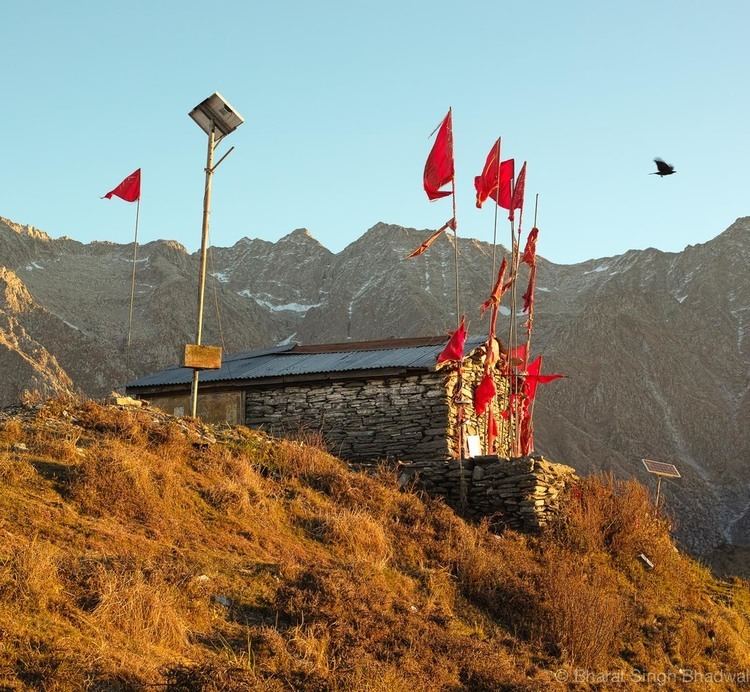 | ||
Similar Kareri Lake, Kafni Glacier, Dhauladhar, Kangra Valley, Birni Devi Temple | ||
Adi himani chamunda trekking kangra h p on 16th march 2014
Himani Chamunda is a Hindu temple dedicated to Chamunda, situated in the Kangra Valley, Himachal Pradesh, India, in the Himalayas.
Contents
- Adi himani chamunda trekking kangra h p on 16th march 2014
- History
- Dedication and worship
- Getting there
- References
History
The temple stands close to the ruins of the palace of Raja Chandar Bhan Chand Katoch (d. 1660), and is of least the same age, if not far older. Until 1992 the temple was also derelict but has been restored, in very large measure as a result of the dedication and hard work of one man, Mr. P. D. Saini, a retired Class 1 officer, who worked on its restoration for 20 years after his retirement, with the assistance of a group of devotees. He continues (as of 2013) to devote himself to the improvement of the temple even after its administration was taken on by the government.
The temple environs are of outstanding natural beauty and for that reason a destination for trekkers.
Dedication and worship

Chamunda (Sanskrit: चामुण्डा, Cāmuṇḍā), also known as Chamundi, Chamundeshwari and Charchika, is a fearsome aspect of Devi, the Hindu Divine Mother and one of the seven Matrikas (mother goddesses). She is also one of the chief Yoginis, a group of sixty-four or eighty-one Tantric goddesses, who are attendants of the warrior goddess Durga. The name is a combination of Chanda and Munda, two monsters whom Chamunda killed. She is closely associated with Kali, another fierce aspect of Devi. She is sometimes identified with goddesses Parvati, Chandi or Durga as well. The goddess is often portrayed as haunting cremation grounds or fig trees. The goddess is worshipped by ritual animal sacrifices along with offerings of wine and in the ancient times, human sacrifices were offered too. Originally a tribal goddess, Chamunda was assimilated in Hinduism and later entered the Jain pantheon too, although in Jainism, the rites of her worship include vegetarian offerings, and not the meat and liquor offerings.

Ramakrishna Gopal Bhandarkar says that Chamunda was originally an indigenous goddess worshipped by the Munda peoples of the Vindhya range of central India. These tribes were known to offer goddesses animal as well as human sacrifices along with ritual offerings of liquor. These methods of worship were retained in Tantric worship of Chamunda, after assimilation in Hinduism. He proposes that the fierce nature of this goddess is due of her association with Vedic Rudra (identified as Shiva in modern Hinduism), identified with fire god Agni at times. Wangu also backs the theory of the tribal origins of the goddess.
Getting there
Himani Chamunda temple is accessible via a moderately difficult trek from Jia village. The trek from Jia village is 7.4 kilometres one way. While the ascent takes 3-4 hours to complete; the descent can be completed in 2-3 hours. The route is dotted with shops, solar lights and shelters. There is no perennial water point available on this trek route or at the temple, so it is advisable to carry your own water.
